Saigawa-Ohashi Bridge
I just finished a tour of the Kanazawa Architectural Museum and stepped outside.
The photo shows the sidewalk extending from in front of the entrance of the architecture museum.
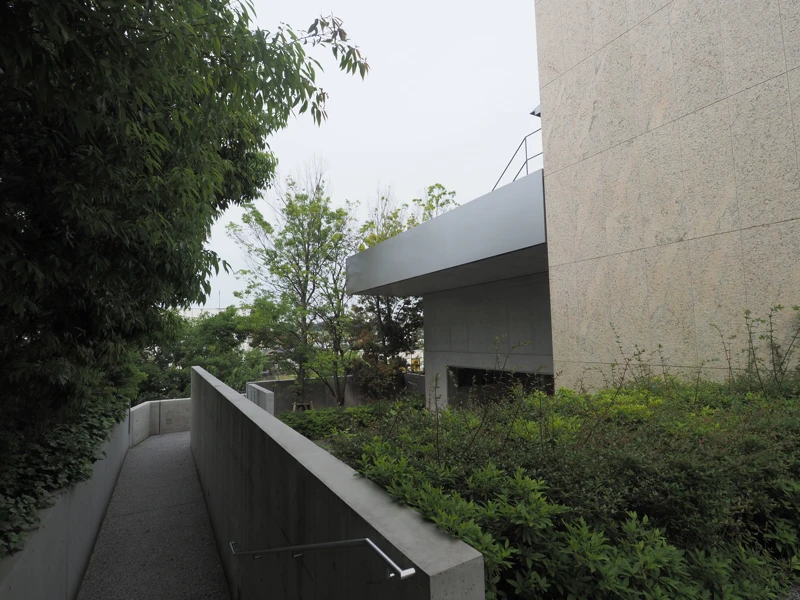
I wasn’t sure if I could pass through or if it was a dead end, but I decided to walk along this path to check it out.
Then the sidewalk turned into stairs and went down and down. There is a greater difference in elevation between the site of the museum and the land behind it than I had expected, maybe 7 to 8 meters?
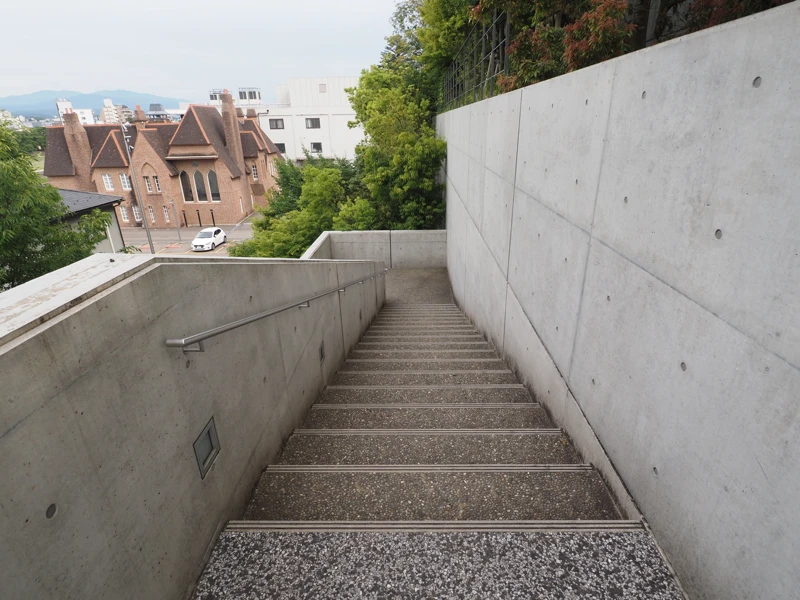
There was a brick building below, but I could not make out what it was. It looked new, so I did not check it out, but later I searched for it and found that it was a wedding chapel that was opened in 1998 or so. At one time, it was a museum of stained glass windows but it was closed, and reopened in 2021 as a wedding hall after a change of management.
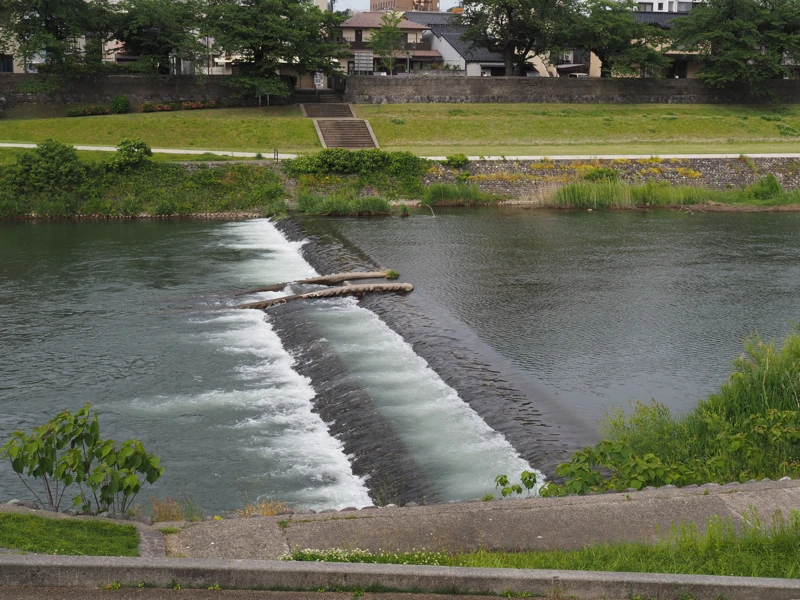
This river is called Saigawa. As a resident of Nagano Prefecture, I tend to think of the Saigawa River, a tributary of the Shinano-gawa River, but I see that Kanazawa also has a Saigawa River.
The path along the river is called “Saisei’s path”, named after the Kanazawa-born writer Murō Saisei. The letter “Sai” in the name “Murō Saisei” was derived from the name of Saigawa.
Looking downstream, we can see a light blue bridge on the other side. That is the Saigawa-ohashi Bridge, which was built in 1924, making it a road bridge that is now 100 years old.

Although I wrote “road bridge,” also streetcars used to cross this bridge, and in the “Overview of Central Japan” published in 1931, you can see the tracks of the streetcars.
The streetcars were discontinued in 1967.
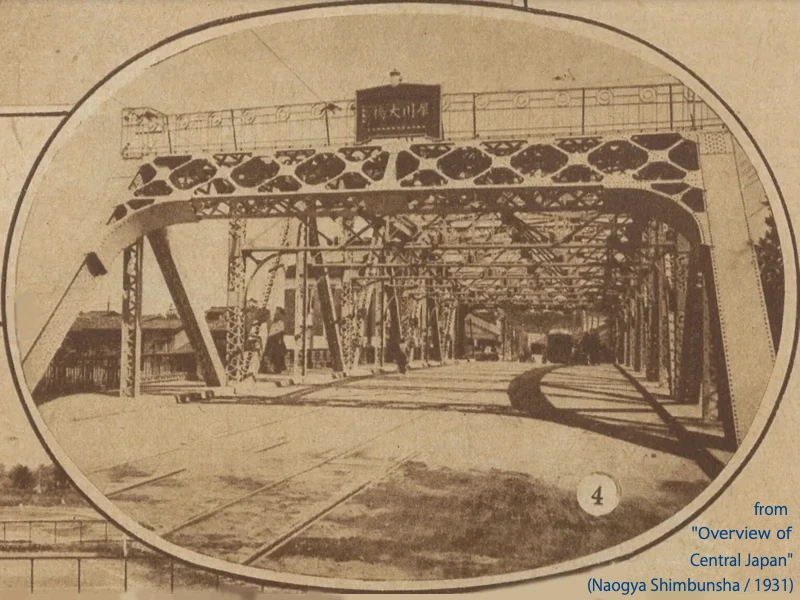
I am gradually approaching the bridge.
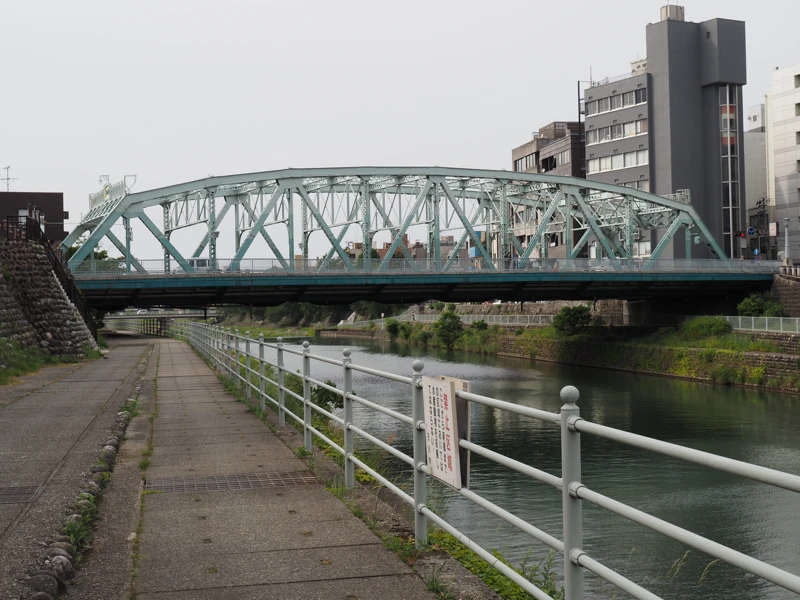
The bridge girders may appear to be slightly wavy, but this does not mean that the bridge is distorted.
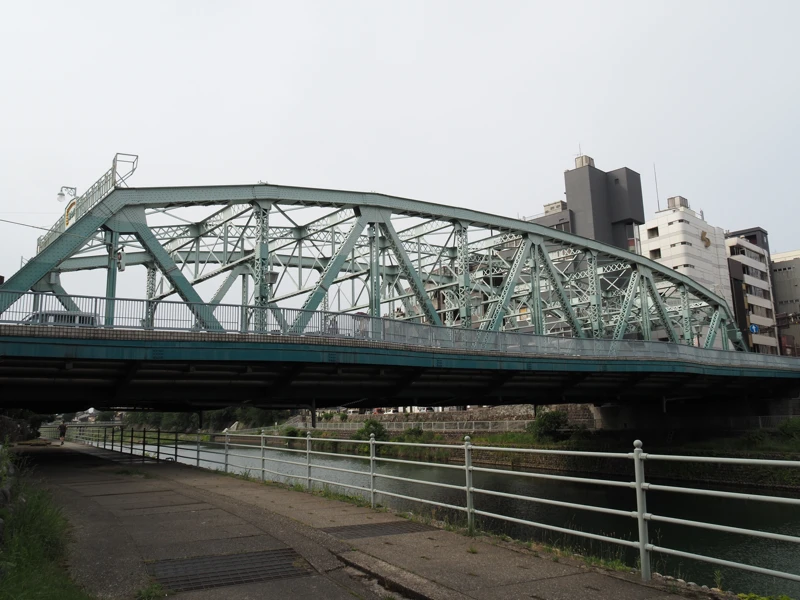
As you can see, there are bulges in the pedestrian walkway. It is probably meant to be a viewing point to admire the river scenery.
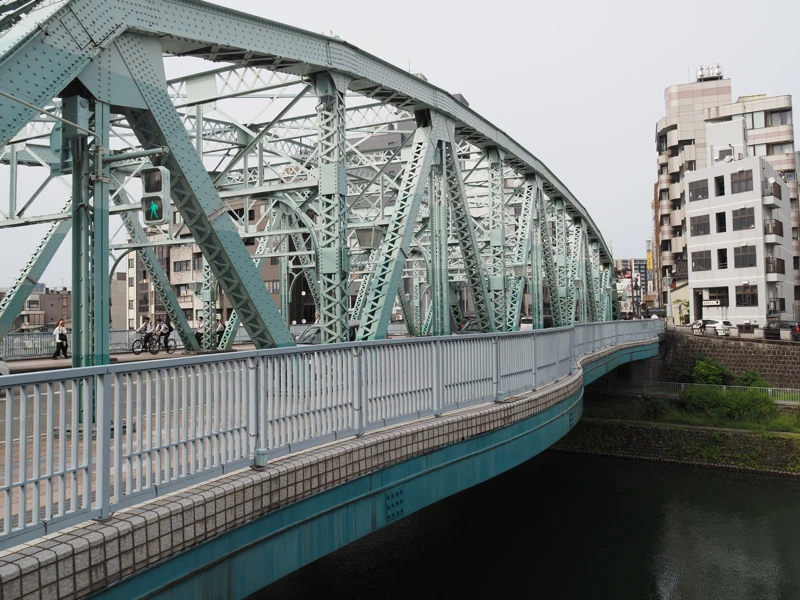
Saigawa-Ohashi Bridge seen from the left bank.
Let’s cross the bridge to the right bank.
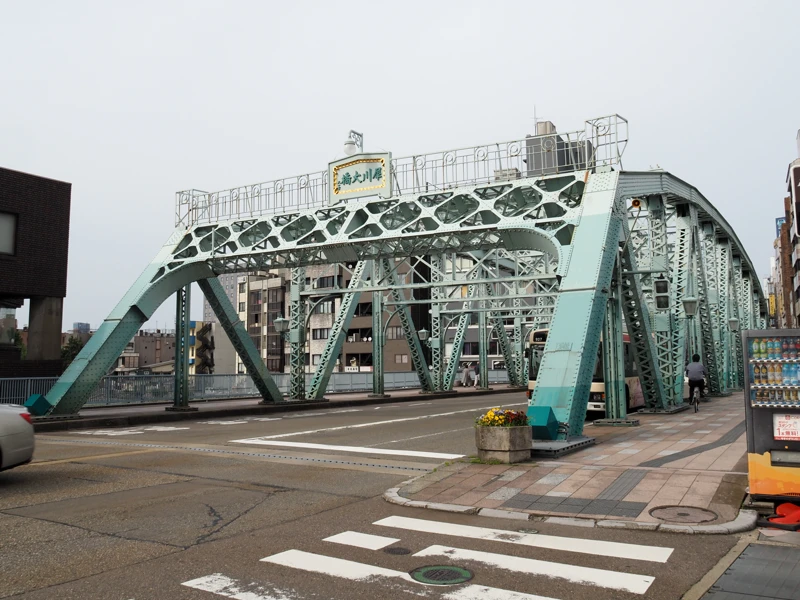
On the right bank, there is an explanatory board.
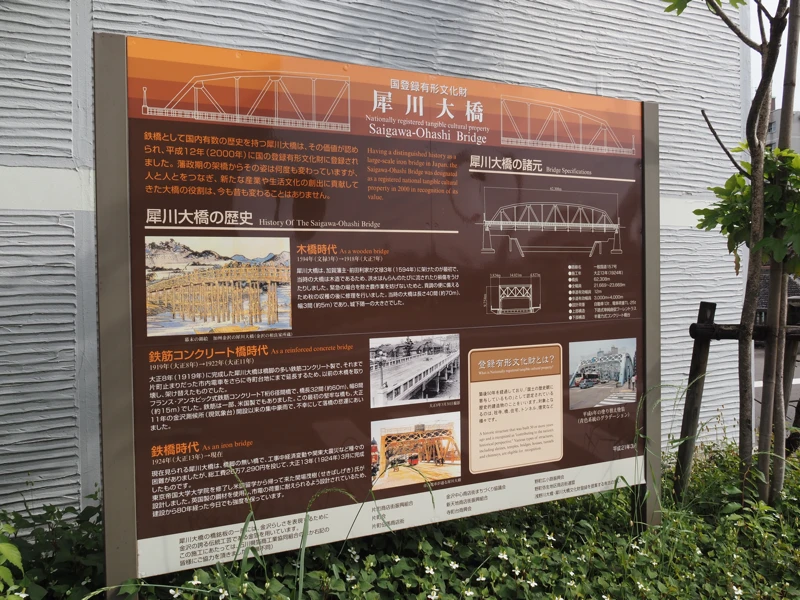
The explanation board explains the history of the bridge in three periods.
(1) Wooden bridge era (1594-1918)
The bridge was first built in 1594 by Toshiie Maeda, lord of the Kaga domain. The bridge was repaired and replaced every time it was washed away by floods.
(2) Reinforced Concrete Bridge Era (1919-1922)
A reinforced concrete bridge was completed in 1919 to extend the streetcars line.
However, the Saigawa River swelled due to heavy rains in August 1922, and the bridge was washed away.
The following is a quotation from a photo in a book published at the time.
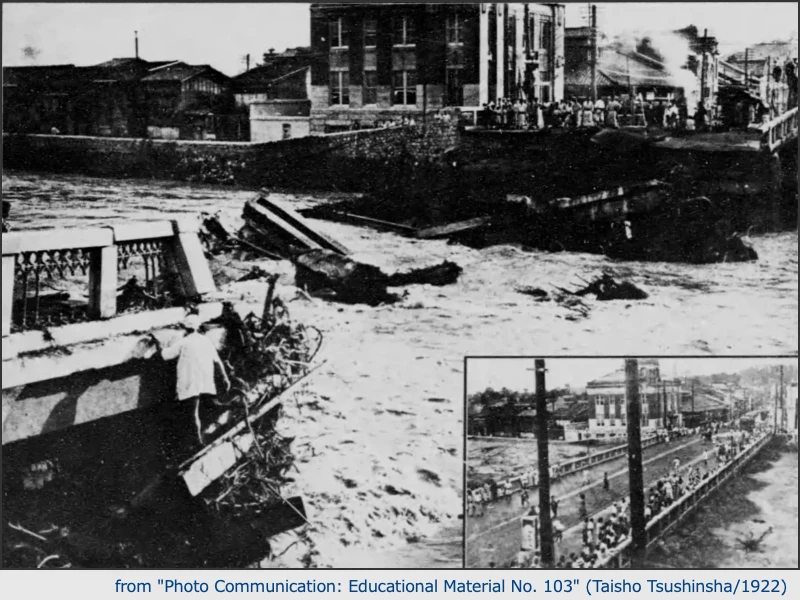
The photo on the lower right was taken just before the bridge was washed away (10 minutes before!, according to the book’s description). It is scary to see so many people on the bridge even though the water is up to the bridge girders.
3) Iron Bridge Era (1924-present)
The iron bridge, completed in 1924, was designed by Sekiba Shigeki (1876-1942).
It has been repaired and painted several times and is still in use today.
And it was registered as a national tangible cultural property in 2000.
This explanatory board was installed in March 2009.
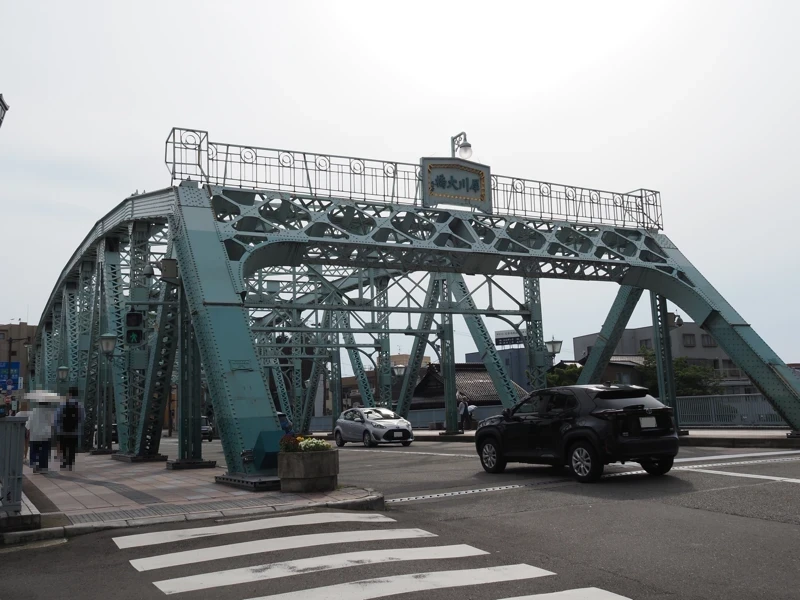
The Saigawa-Ohashi, photographed from in front of the explanatory board.
Last year, the 100th anniversary of the bridge was celebrated with the Saigawa-ohashi Centennial Festival.
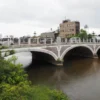
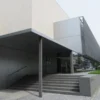
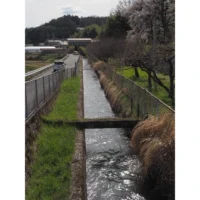
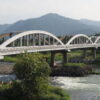
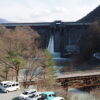
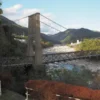
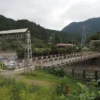
Discussion
New Comments
No comments yet. Be the first one!